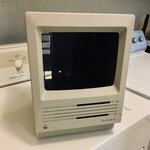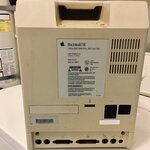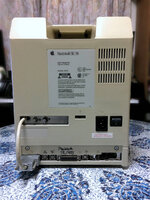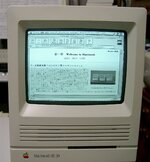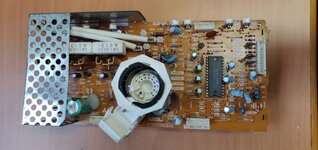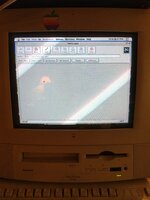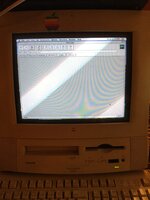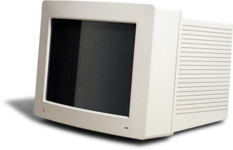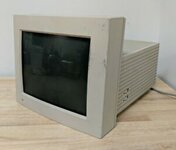chillin
Well-known member
I'm starting with an empty SE case with internal chassis CC_333 is kindly selling to me. There's going to be a lot of preliminary work getting the case ready, but I want to think ahead towards what its brain could be to give a longer lead time before I pull the trigger.
One way to go is just drop a small computer in, such as a Mac mini. But a Mac mini is just fine the way it is, no reason to hide it in a case. So I'm researching what possible logic boards I can install in an SE case, and build out components.
First of all, will someone please provide me the precise dimensions of an SE or SE/30 logic board? Thanks.
I think that is the best place to start. I know any Mini-ITX board and smaller will easily fit inside a compact mac, but I'd like to investigate the larger 9.6" sq.in. Micro-ATX form factor to see if there may be a slightly smaller Micro-ATX board somewhere that may precisely fit and slide into the chassis where the SE logic board once fit.
The Raspberry Pi is probably the simplest and most affordable option here, and I'd probably be satisfied with the Raspberry Pi 4, or maybe one of the Turing Pi, but max. RAM is limiting on Pi, the storage bus is limiting (with only micro SD card or USB2/3 available, no SATA), as well as choice of OS (maybe about 20 similar mostly Debian-variant OS available: the macOS themes and System 6/7 emulators on some are compelling, as well as the support community, but no hackintosh option will ever likely be possible), so I want to explore other options, such as Intel NUC (which I find to be outrageously expensive), other Intel, AMD & ARM motherboards and SBCs.
I would consider some other 68k Mac logic board, but as far as I know, there is no other 68030/40 Mac logic board that will fit that is superior to the SE/30 logic board (that takes a decent amount of RAM). You can't fit a Quadra 950, 800, or 700 logic board in a compact Mac, and the other smaller Quadra or LC logic boards that might fit, such as the Quadra 605, use the 68LC040 processor with no co-processor. One option that is attractive, that possibly could be shoehorned, perhaps vertically, is the LCIII+ logic board... but bare classic Mac logic boards aren't usually readily available, and I do not want to cannibalize any viable classic Mac.
I'm going to need help with many portions of this project, and I really appreciate the community's support. I'll keep everything to do with this one confined to this thread, and I'll post updates and pics here too. Using CC_333's images here because I haven't seen the piece first hand yet.
Thanks CC_333, and thanks all.
One way to go is just drop a small computer in, such as a Mac mini. But a Mac mini is just fine the way it is, no reason to hide it in a case. So I'm researching what possible logic boards I can install in an SE case, and build out components.
First of all, will someone please provide me the precise dimensions of an SE or SE/30 logic board? Thanks.
I think that is the best place to start. I know any Mini-ITX board and smaller will easily fit inside a compact mac, but I'd like to investigate the larger 9.6" sq.in. Micro-ATX form factor to see if there may be a slightly smaller Micro-ATX board somewhere that may precisely fit and slide into the chassis where the SE logic board once fit.
The Raspberry Pi is probably the simplest and most affordable option here, and I'd probably be satisfied with the Raspberry Pi 4, or maybe one of the Turing Pi, but max. RAM is limiting on Pi, the storage bus is limiting (with only micro SD card or USB2/3 available, no SATA), as well as choice of OS (maybe about 20 similar mostly Debian-variant OS available: the macOS themes and System 6/7 emulators on some are compelling, as well as the support community, but no hackintosh option will ever likely be possible), so I want to explore other options, such as Intel NUC (which I find to be outrageously expensive), other Intel, AMD & ARM motherboards and SBCs.
I would consider some other 68k Mac logic board, but as far as I know, there is no other 68030/40 Mac logic board that will fit that is superior to the SE/30 logic board (that takes a decent amount of RAM). You can't fit a Quadra 950, 800, or 700 logic board in a compact Mac, and the other smaller Quadra or LC logic boards that might fit, such as the Quadra 605, use the 68LC040 processor with no co-processor. One option that is attractive, that possibly could be shoehorned, perhaps vertically, is the LCIII+ logic board... but bare classic Mac logic boards aren't usually readily available, and I do not want to cannibalize any viable classic Mac.
I'm going to need help with many portions of this project, and I really appreciate the community's support. I'll keep everything to do with this one confined to this thread, and I'll post updates and pics here too. Using CC_333's images here because I haven't seen the piece first hand yet.
Thanks CC_333, and thanks all.
Attachments
Last edited:

